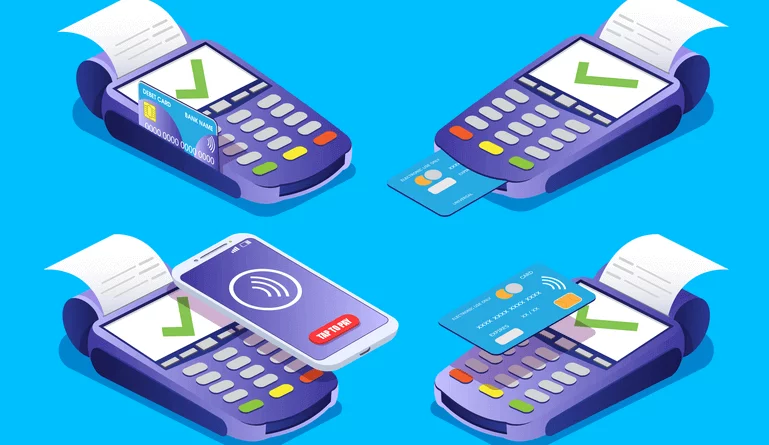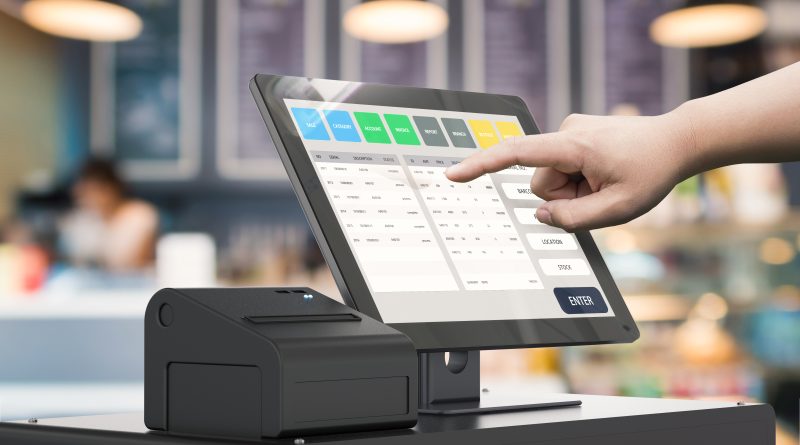POS System for Clothing Store: A Sales Management Option Designed To Simplify Transactions For Little Enterprises
Functions and Benefits
When diving into the world of a Point Of Sales System for small company, it's not simply about phoning sales. What truly sets these systems apart is the rich tapestry of features woven into their style, each crafted to elevate the day-to-day grind of a small business owner. Imagine a tool that not only tracks sales but likewise checks out the pulse of your inventory like a skilled investigator. Interesting, ideal?
Core Functions That Transform Daily Operations
- Inventory Management: Gone are the days of frenzied stock checks. Modern POS systems immediately update your inventory, signaling you when products run low. It's as if your system whispers, "Hey, time to reorder!" before you even recognize it.
- Sales Reporting: Numbers can be complicated, however an excellent POS system provides sales data in clear, absorbable formats. Charts, charts, and real-time control panels make it simple to identify patterns and make notified decisions.
- Worker Management: Setting up shifts and tracking hours become seamless. This function not only conserves time but decreases human mistake, a constant thorn in the side of small company owners managing numerous hats.
- Customer Relationship Management (CRM): Think of knowing your consumers as well as your buddies. POS systems can keep client choices and purchase history, allowing personalized marketing that feels authentic, not forced.
Advantages That Speak to the Heart of Small Company Requirements
Why do these functions matter? Because behind every deal is a story, and a properly designed POS system helps you tell it much better. It's not just about performance; it's about empowering you to concentrate on what truly matters-- your clients and development.
| Feature | Benefit | Effect on Company |
|---|---|---|
| Real-time Inventory Updates | Avoids stockouts and overstocking | Enhances capital and client complete satisfaction |
| Detailed Sales Analytics | Determines best-selling items and peak hours | Notifies marketing and staffing strategies |
| Integrated Payment Processing | Accelerate checkout and minimizes errors | Enhances customer experience and develops trust |
| Customer Data Management | Enables targeted promotions and loyalty programs | Boosts repeat company and consumer retention |
Ever Wondered How This Plays Out in Real Life?
Photo a quaint coffee store owner, handling orders during a morning rush. The POS system not just processes payments swiftly however notifies her to a decreasing supply of her signature beans. She reorders flawlessly, preventing a consumer dissatisfaction. Little minutes like this, powered by smart innovation, become the unrecognized heroes of business success.
Could your small business thrive with a tool that feels more like a partner than just a maker? The right Point Of Sales System does not just manage transactions-- it informs the story of your business, opening possible concealed in everyday data.
Checking out the Kinds Of Point Of Sales Systems for Small company
Think of strolling into a busy café, the barista juggling orders while the register sings the tune of smooth transactions. Behind that consistency lies the option of a POS system, tailored to fit the rhythm of the organization. However what sort of systems really empower small companies to prosper? Let's dissect the landscape.
1. Traditional POS Systems
These are the sturdy old-timers, frequently hardware-heavy and in your area set up. They boast robust functionality however sometimes seem like lugging a typewriter into the digital age. While they use dependability, their rigidity can journey up businesses craving dexterity and remote gain access to.
- Pros: Fast processing, offline ability, detailed stock management.
- Cons: Preliminary hardware financial investment, restricted flexibility for scaling or movement.
2. Cloud-Based POS Systems
Think about these as the active acrobats of the POS world. Cloud-based systems run by means of web, making it possible for business owners to manage sales and inventory from virtually anywhere. This liberty, however, dances in tandem with reliance on stable web connections-- a double-edged sword for some.
- Advantages: Real-time updates, scalability, integration with several devices.
- Disadvantages: Vulnerability during web interruptions, constant membership charges.
3. Mobile POS Solutions
Have you ever stood in line at a farmer's market, enjoyed a supplier ring up sales on a tablet, and wondered how that magic occurs? Mobile POS systems turn mobile phones and tablets into powerful sales tools. They shine in environments where mobility and flexibility overshadow the need for bulky terminals.
- Perfect for pop-ups, food trucks, and little retail stores.
- Integrates with payment gateways and supports fast checkouts.
- Keep in mind: Smaller sized screen sizes can sometimes limit advanced stock tracking.
4. Self-Service Kiosks
Automation actions in with self-service kiosks, transforming client interaction. While more common in larger setups, little services checking out ingenious consumer engagement may consider scaled-down versions.
- Reduces wait times and frees staff for other jobs.
- Needs thoughtful UX style to prevent user frustration.
| Type | Finest Suited For | Key Feature | Potential Constraint |
|---|---|---|---|
| Standard POS | Developed brick-and-mortar stores | Offline transactions | Hardware expenses |
| Cloud-Based POS | Businesses requiring remote gain access to | Real-time data syncing | Internet dependency |
| Mobile POS | Mobile suppliers and pop-ups | Mobility | Restricted screen area |
| Self-Service Kiosks | Customer-centric environments | Automation | Style intricacy |
Do you ever question why some little companies seem to move easily through their sales process while others stumble over simple jobs? The type of POS system chosen often fixes a limit in between smooth cruising and functional headaches. Selecting a system without thinking about the particular workflow can lead to missed sales or stock mayhem. For example, a flower shop handling seasonal products may find standard inventory modules clunky, whereas a cloud-based setup provides vibrant updates and multi-device gain access to.
Pro suggestion: Dive into the subtleties of combination capabilities. A POS system that syncs with your accounting software application and stock management can conserve hours of manual labor weekly. Remember, the goal is to simplify. If the system feels like a barrier, it probably is.
Implementation and Setup
Envision standing in your little shop, surrounded by curious consumers, while your brand-new Point of Sales System blinks calmly on the counter. The excitement of contemporary technology fulfills the reality of getting it up and running. How does one leap from the enjoyment of purchase to smooth operation?
Setting up a POS system for small company isn't almost plugging in hardware and clicking through software prompts. It's a complex dance, where every step must be exact to prevent hiccups that ripple through daily operations.
Secret Steps to a Smooth Setup
- Stock Integration: Before you scan your very first product, ensure your inventory database is tidy and detailed. Duplicate entries or missing SKUs can trigger mayhem during transactions.
- Hardware Configuration: Link peripherals like barcode scanners, receipt printers, and cash drawers carefully. Focus on USB port assignments and motorist installations-- a neglected information here can stall your workflow.
- User Access Levels: Define clear functions within the system to prevent unintentional overrides or unapproved refunds. A well-structured user hierarchy secures your sales information's integrity.
- Tax and Pricing Guidelines: Customize tax rates and discount structures to reflect regional guidelines and your advertising plans. Automated computations avoid pricey manual errors.
- Test Transactions: Run numerous situations imitating real sales to determine any problems or bottlenecks. Do not ignore this action-- it conserves headaches later on.
Specialist Tips for Effective Execution
- Backup existing sales and inventory information before migrating to the new system, just in case.
- Usage batch import features for inventory information; manual input is a dish for errors.
- Consider the workflow from both the cashier's and the client's viewpoint when organizing your checkout interface.
- Label cables and gadgets throughout setup to streamline troubleshooting and future upgrades.
- Schedule installation throughout off-hours to prevent disrupting peak organization times.
Typical Setup Snags to Expect
| Problem | Impact | Prevention |
|---|---|---|
| Incorrect tax settings | Overcharging or undercharging customers | Confirm regional tax codes and update system accordingly |
| Hardware incompatibility | Peripheral devices stop working to run | Check device compatibility before purchase |
| User authorization errors | Unauthorized gain access to or unintentional information removal | Set strict gain access to controls and audit routinely |

Have you ever questioned why some POS setups feel user-friendly while others seem to trip you up at every turn? The secret depend on preparing for the unseen snags and iPad POS System crafting your setup with insight. A well-executed execution not just accelerates sales but changes your small company's daily rhythm into a streamlined symphony.
Security and Compliance Factors To Consider
Envision awakening one morning to discover your point of sales system has been breached over night. Client information exposed, deals jeopardized, and your small company's credibility teetering on the edge. It's a scenario no entrepreneur wants to face, yet lots of ignore the subtle vulnerabilities that lurk in their POS infrastructure.
At the heart of every protected POS system lies encryption. Not just any file encryption, however end-to-end file encryption that scrambles cardholder data from the minute it's swiped until it reaches the payment processor. Without this, sensitive details can fall victim to cyber eavesdroppers or hackers hiding in the network shadows.
Key Security Practices to Fortify Your POS
- Routine software application updates: Out-of-date software application resembles leaving your backdoor broad open. Regular updates spot recently found vulnerabilities that cybercriminals are quick to make use of.
- Strong authentication protocols: Use multi-factor authentication anywhere possible. A simple password will not cut it any longer-- layered security is the brand-new standard.
- Network segmentation: Keep your POS system isolated from other service networks. This separation restricts the spread of malware and unapproved access.
Compliance isn't almost ticking boxes-- it's a non-negotiable framework that guarantees you're dealing with payment data properly. The Payment Card Market Data Security Standard (PCI DSS) is often considered the gold requirement for POS compliance, however small organizations regularly underestimate the depth of its requirements.
Did you know that saving cardholder data beyond what's absolutely required can immediately put you out of compliance? Lots of small company owners unconsciously keep deal logs with sensitive details for benefit, unintentionally inviting regulative analysis.
Compliance List for Small Company POS Systems
| Requirement | Why It Matters | Pro Tip |
|---|---|---|
| Secure transmission of cardholder data | Prevents interception during payment processing | Use TLS 1.2 or greater for protected interaction |
| Keep a safe network | Blocks unapproved gain access to efforts | Change default system passwords immediately after setup |
| Implement gain access to controls | Limitations who can see or process payment data | Designate role-based permissions tailored to task functions |
| Monitor and test networks regularly | Finds breaches before they become devastating | Arrange quarterly vulnerability scans and penetration tests |

Ever wondered why some little organizations get better rapidly after a security scare, while others fall apart? The difference depends on proactive procedures and comprehending the subtle complexities of point of sale security. Easy steps like disabling unused services on your POS gadget can drastically decrease exposure.
Lastly, bear in mind that compliance is a moving target. Regulations progress, cyber dangers mutate, and what was protected yesterday may be obsolete tomorrow. Stay curious, remain alert, and never ever presume your system is too little to be discovered.